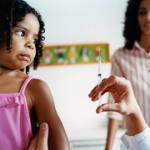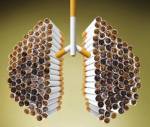“Modest” success in an HIV vaccine trial shows for the first time that vaccination can protect people against infection with the AIDS virus.
It’s a small but significant step forward. Few, if any, think this vaccine is effective enough to deploy in the worldwide fight against AIDS. But many experts say it offers badly needed hope to an effort marked by many expensive failures.
“While these results are encouraging, we recognize that further study is required to build upon these findings,” Col. Nelson Michael, director of the U.S. Military HIV Research Program, says in a news release.
The trial was a collaboration between the U.S. Army, Thailand, the U.S. National Institute of Allergy and Infectious Diseases, Sanofi Pasteur, and Global Solutions for Infectious Diseases. It tested Sanofi’s ALVAC vaccine boosted with a dose of GSID’s AIDSVAX.
Conducted in Thailand, it began in 2003 and enrolled 16,402 adult, HIV-negative men and women. Half got the two-part vaccine, and half got inactive placebo shots.
Over the course of the study, 74 placebo recipients and 51 vaccine recipients became infected with HIV. The difference isn’t large, but it translates into 31% vaccine effectiveness. That is, it lowered the risk of getting HIV by 31%.
That’s “an important step forward in HIV vaccine research,” NIAID director and long-time AIDS researcher Anthony Fauci, MD, says in a news release. “Certainly this is an encouraging advance.”
Even so, the study results are puzzling. It was expected that vaccine recipients who became infected would at least have some protection against the virus. But the study found no evidence of such protection. HIV levels were just as high in vaccine recipients who became infected as in placebo recipients who contracted the virus.
Perhaps more importantly, the study fell far short of its goal of reducing the risk of HIV infection by 50%.
The study was controversial from the outset. It’s the largest HIV vaccine trial yet conducted, and some AIDS activists called the study a waste of precious resources.
AIDSVAX, the first HIV vaccine ever to be tested, had already failed to prevent HIV in a number of trials. ALVAC, a live canarypox virus carrying HIV genes, did not appear to stimulate strong immune responses in healthy people. And similar combination vaccine strategies showed little evidence of eliciting strong immune responses.
Moreover, a similar study of the ALVAC and AIDSVAX vaccines had been canceled in the U.S. And critics said the study design would make it hard to tell which part of the vaccine regimen was or was not effective.
Now that the study is completed, researchers will go over the data with a fine-tooth comb. They’ll try to figure out what worked and build on that success.
“Knowledge gained through this study will be used to accelerate future study design and testing as researchers continue the search for a safe, globally effective HIV vaccine,” Col. Jerome Kim, HIV vaccines product manager for the U.S. Army, says in a news release.
SOURCES: News release, National Institute of Allergy and Infectious Diseases. News release, U.S. Military HIV Research Program. News release, AIDS Vaccine Advocacy Coalition. News release, World Health Organization. News release, Fred Hutchinson Cancer Research Center. News release, International AIDS Vaccine Coalition. News release, Treatment Action Group. News release, National Institute of Allergy and Infectious Disease.



